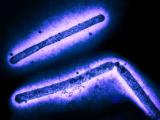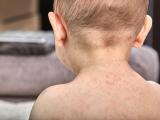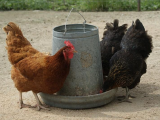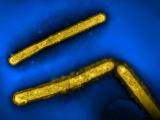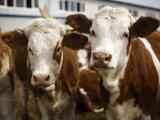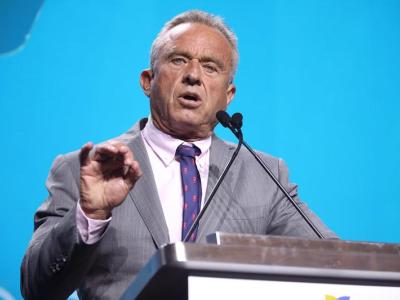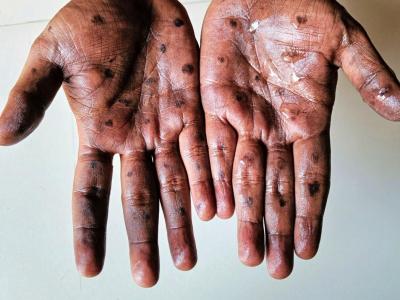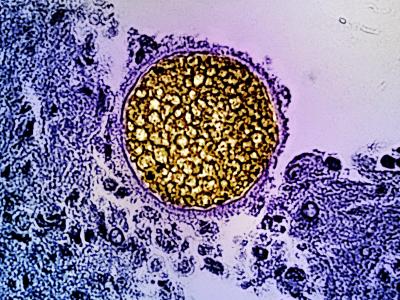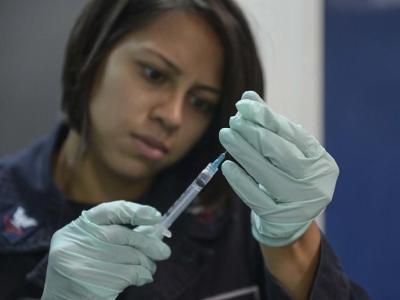Jan 3, 2008 (CIDRAP News) – An official from the World Health Organization (WHO) today shared results of initial genetic sequencing tests on H5N1 avian influenza samples from a man who died of the disease in Pakistan that suggest the strain doesn't have the capacity for widespread transmission.
John Rainford, a WHO spokesman in Geneva, told CIDRAP News that the genetic sequencing involved two clinical samples from a 25-year-old man from the Peshawar area who was recently announced as the first confirmed human H5N1 case-patient and fatality in Pakistan.
The man was part of a family cluster of suspected H5N1 cases which sparked global concern that the virus had mutated into a form that could enable widespread human-to-human transmission. However, the WHO said in a previous statement that while the Pakistani cases suggest a rare instance of human-to-human transmission, the virus did not spread beyond the family.
Rainford said preliminary sequencing of the hemagglutinin and neuraminidase genes from the specimens was performed at the WHO collaborating center in London. Tests completed so far show the hemagglutinin amino acid sequence is identical to some of the recent clade 2.2 viruses that have been isolated from chickens in other outbreaks in the region, he said.
WHO virologists say the findings, along with recent field investigations, suggest that the H5N1 viruses in Pakistan have not gained the capacity for widespread human-to-human transmission, reported Rainford.
In addition, neither analysis by WHO collaborating scientists of the neuraminidase gene nor partial sequencing of the M2 gene shows mutations that are known to be associated with antiviral resistance, Rainford said. "This indicates oseltamivir and amantadine should be inhibitory for the virus," he added.
Rainford said full genome sequencing is in progress.
The WHO praises Pakistan's timely investigation and management of suspected H5N1 cases, Rainford said. "[This] has provided reassurance about the lack of community H5N1 transmission, an effort that deserves appreciation and support."
In other avian flu developments, the WHO yesterday confirmed two fatal H5N1 cases in women from Egypt whose deaths were recently reported in the media. One was a 25-year-old from Dakahlyah governorate who got sick Dec 26, was hospitalized the next day, and died Dec 30. The other was a 36-year-old from Menofia governorate who became ill Dec 26, was hospitalized Dec 29, and died 2 days later.
The two women are listed as Egypt's 42nd and 43rd avian flu case-patients, and their deaths are recorded as the country's 17th and 18th fatalities from the disease.
The WHO reported that investigators have found no epidemiologic link between the 36-year-old and another woman from Menofia governorate whose H5N1 illness was recently confirmed by the WHO. That 22-year-old woman was previously reported to be recovering in intensive care.
Also, the WHO today confirmed the death of a 50-year-old Egyptian woman who was previously confirmed as the country's 40th H5N1 case-patient on Dec 28. The woman, from Domiatt governorate, was hospitalized Dec 24 and died Dec 31. She is listed as Egypt's 19th avian flu death.
In its announcements about the women, the WHO said all three had contact with sick or dead poultry before they became ill.
Elsewhere, a veterinary official in Vietnam told Tuoi Tre newspaper that the country's most recent H5N1 patient, a 4-year-old boy from Son La province who died of the disease on Dec 16, may have contracted the virus from a wild bird, according to a Bloomberg News report today.
That report says the official, Van Dang Ky, speaking at a national conference on bird flu control in Hanoi yesterday, noted that the boy's family had brought home some wild birds from a hunting trip and also that samples from poultry in the area where the boy lived tested negative for the H5N1 virus.
See also:
Dec 27 CIDRAP News story "WHO confirms H5N1 case in Pakistan cluster"


